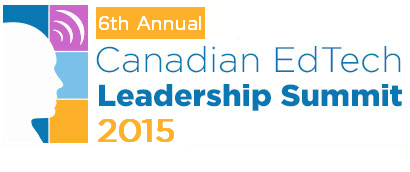 We had a great panel at the MindShare Learning EdTech Leadership Summit today, enhanced by a profound participation from the audience. I’d like a to share a few highlights, leaving the comment section open for everyone wishing to share their own take-aways.
We had a great panel at the MindShare Learning EdTech Leadership Summit today, enhanced by a profound participation from the audience. I’d like a to share a few highlights, leaving the comment section open for everyone wishing to share their own take-aways.
Victor Garcia, Adjunct Professor at the Schulich School of Management and Senior Fellow at Bell Canada, gave a clear definition of IoT from his big data class. He stressed that technology is not the issue, instead we need to focus on the business outcomes. The real value is the ability to help executives take the right decisions, to make money, save money, and/or to make the world better. Later somebody from the audience made the point that, more than money, it is more about saving people’s time (e.g. faster clearing of paperwork, less wasted time allowing nurses to focus more on patient care). Don’t we all need more time?
Shawn Naroozi, IoT expert from Microsoft USA, and Jeff Lundgren, IoT Sales Lead for Microsoft Canada, shared a compelling example of an IoT implementation for truck management (connected transportation). Connecting to the TV screen with a few clicks from his Surface device, Shawn demonstrated the wide amount of live information available from any particular truck (engine levels, status of the cargo, etc). We discussed applications in education, for example connected buildings. It is clear that IoT can benefit both the operations of educational organizations, as well as the quality of the delivery in the classroom (making the class more relevant and engaging).
Kelli Davis, VP Integration Services at CastleBranch, explained how her company found a gap in higher education. They started to digitize student health records to save everybody’s time and to ease the transmission of information to the right parties at the right time. Privacy and security are important concerns. The younger generation is more inclined (and more trusting) about sharing their information, especially when it add value for the user experience. Somebody commented that students are really becoming the teachers in some way. Sometimes it is more effective to call a student to fix a problem that the local tech person.
Amir Anani, CEO and President of ICTC, shared a lot of insights about ICT trends, the labour market, productivity and innovation, and the relative position of Canada in the global market. Training and investing in the future workforce is required to maintain a competitive advantage, noted the audience. Namir made the point that in some situations there is no significant revenues for the private sector to justify an investment, in which case the government should step in. The audience added that government should take a leadership role, especially when it comes to strategic issues as education.
The audience also made interesting comments about the role of trustees, the turnover among their ranks, and the opportunity to educate them on ICT trends. We discussed change management, and some success stories (supporting champions, and celebrating heroes). May be we’d need the kind of executive education that private sector managers receive? The conversation turned back to education.
IoT could be used to cross-reference brain waves with student activities and learning outcomes. Interestingly, InteraXon is one of the 3 Toronto-based start-ups to make the top 100 by total funding. Nobody seemed shocked by the idea. It looks like we all believed that students would have absolutely no issue with that. In any case, the point was to engage students better while providing the best support at the time of need. Shawn added that another way to use data would be to improve the process and the system over time (as an iterative feedback loop).
Douglas Reid, Director Learning & Research Infrastructure at the Lassonde School of Engineering, told us that the main point about IoT is that it makes us think (harder). The Renaissance Engineer (trademarked) combines knowledge and skills from multiple fields such as engineering, law, and design, to solve problems more effectively. The audience noted that companies have a role to play in delivering education. We came to agree that a joint effort by a large number of businesses, building on common ground, would be helpful for the education system to innovate faster. Students and educators could be part of this.
Finally, Jonathan Le Lous, VP Cloud & Infrastructure and Global Alliances Manager at Savoir-faire Linux, reminded us about the nature of sharing software code and best practices. The Linux ecosystem has turned into a $30 billion industry. Linux now runs a wide majority of devices from Android watches to cars, supercomputers, phones, TVs… We can learn from the start-up playbook. Those fast-rising ‘unicorns’ often bootstrap their business with free software (e.g. Twitter, Facebook). We don’t need a lot of money to create new value. We just need to get started!









[…] le sujet vous intéresse, lisez aussi mon billet sur la table ronde sur l’Internet des objets et la nouvelle révolution numérique qui avait lieu le 27 octobre. Nous avions affaire à un excellent panel de […]
[…] you are interested, you should read my post on the roundtable on IoT and the next digital revolution which was held on October 27. We had la crème de la crème sharing their informed […]